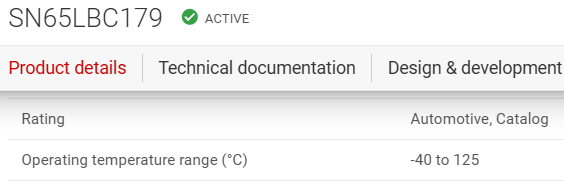Other Parts Discussed in Thread: SN65LBC179,
Tool/software:
Is there an automotive alternative for the part, SN65HVD77DGKR?
The closest one I found was SN65LBC179QDR, but it has the following differences:
- Vcc = 5V (instead of 3.3V)
- Max signaling rate = 10 Mbps (instead of 50 Mbps)
- Larger footprint 8-SOIC (instead of 8-MSOP)
Is there anything closer?
Thank you.




